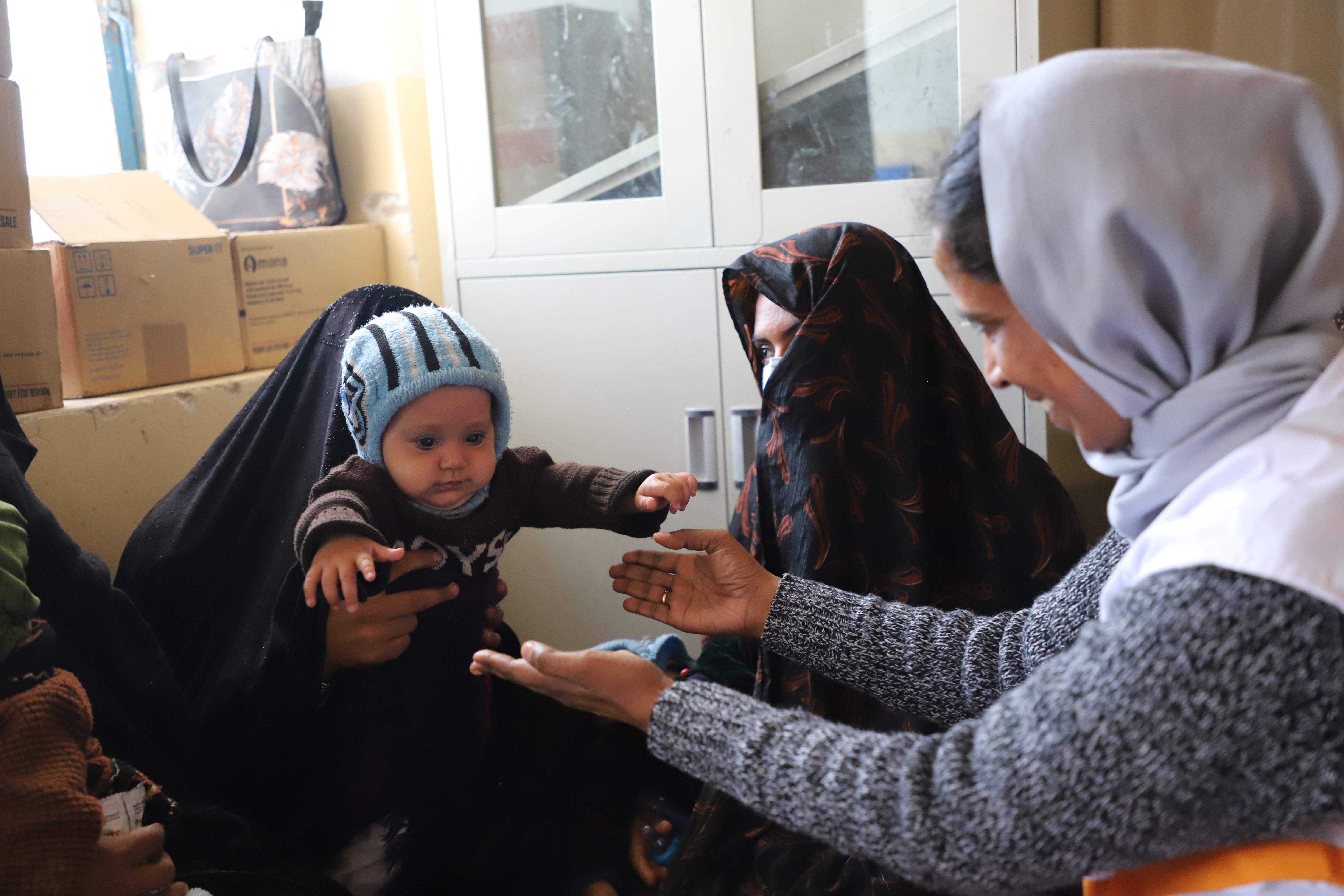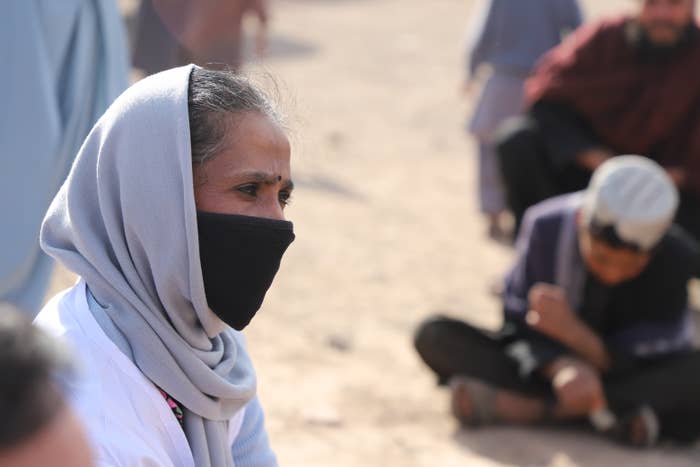If you were starving and you knew that selling one of your kids could prevent the others from dying, would you do it?
Story continues after "IN SHORT"
IN SHORT
-
24.4 million Afghan people in humanitarian need – nearly half the population
-
In 2022, over one million children risk dying from severe acute malnutrition
-
About 40% of Afghanistan’s crops were lost to drought this year (2021), according to WFP
-
WV has provided life-saving food assistance to 27,075 households during the month of December 2021 to early January 2022

Asuntha Charles meets with mothers in a mobile health clinic in Herat. A leader dedicated to the children of Afghanistan, she deeply believes in their right to survive & build a future.
Asuntha Charles is the National Director of World Vision Afghanistan. She recently visited Herat, the location of our Childhood Rescue projects. Here are some of her personal reflections on the current hunger crisis.
5min read
For a moment, let’s put aside the shocking reality that in Afghanistan you can purchase a child, a practice that’s now increasing in response to the dire hunger situation in the provinces where World Vision’s emergency response staff work.
Instead, I was thinking of the awful choices mothers and fathers are forced to make. I recall David Beasley, executive director of the United Nation’s World Food Programme (WFP), pleading on BBC News for world and business leaders to step up and donate.
“Imagine that this was your little girl or your little boy, or your grandchild about to starve to death. You would do everything you possibly could,” he said. For most of us, it comes down to a decision to donate.
For Afghan parents, it’s the choice of which child to sell for food.
The situation in Afghanistan is so bad that my dedicated national emergency response staff — while running food aid programs in remote areas — have now set up an in-office fund to support families so they can stop selling their children.
Although these practices took place before the Taliban came to power, they’ve now worsened due in part to the hunger crisis. My staff recently even heard of one father who tried to leave his children at a mosque, such was his desperation. This is happening because food assistance programs like those we run, which meet the needs of many thousands, are being outpaced by the growing numbers of people facing starvation. Many of the previous activities run to protect vulnerable children have also not been able to restart following the change in national leadership.
Afghanistan is now facing its worst hunger crisis in living memory.
My organisation, World Vision, has been on the ground for 20 years undertaking a range of humanitarian and development work, but the activities that are most critical at this moment are providing emergency nutrition via 15 mobile health clinics. It is heartbreaking to visit these clinics and meet young mothers who share stories of their struggles to survive on almost nothing.
Medical staff measure the arms of children as an indicator of how malnourished they are. The weakest get sent to specialist nutrition wards in hospitals. Those wards are filling with children, sometimes several to a bed, and deaths are increasingly commonplace.
The other thing we do is provide food that WFP gives us to distribute in the remote and mountainous provinces where we work in Western Afghanistan. All these are marked ‘emergency’ red on a map managed by global food security experts who have assessed the food situation. In fact, most of Afghanistan is now red - and just one step away from ‘famine’ black.
The situation was already bad before the Taliban took control of Kabul in August. Drought, very probably worsened by climate change, and conflict that had displaced tens of thousands, had created the initial conditions for this crisis. But an already bad situation has significantly worsened. International funding that supported crucial sectors such as health and education and development has largely been suspended.
The people of Afghanistan are now paying a punishing price for these suspensions. Half of all children aged under five — around 3.2 million — were expected to suffer from acute malnutrition by the end of 2021.
"One million children are at risk of dying without immediate life-saving treatment."
The timeline and trajectory of this emergency is beginning to become clear, but by the time the world realizes its scale, it might already be too late. Getting food trucks through the mountain passes will be next to impossible. And children weakened by malnourishment will already be dying from the cold, from diseases like tuberculosis and respiratory infections. When famine was finally declared in Somalia in 2012 many of the 260,000 people who eventually died had already done so. The scale of this crisis may be worse. We must not let that happen again.
In this day and age, we should never ever let any child starve, or witness families having to make the impossible choices they are now being forced to make.
The time to act is now.
necesitan ayuda humanitaria... ¡eso es la MITAD de los habitantes del país!
What can I do?
Here's three ways for you to go a little deeper - chat, act or share!
- 1
Ask a Question
Got something you don't quite understand? Ask a question and we'll get you an answer direct from our amazing project staff.
Ask Away - 2
Donate
Every gift makes a difference. Our Childhood Rescue fund helps children living in the world’s most dangerous places.
Donate Now - 3
Share on Social Media
Raising awareness is vital. Help make people aware of the situation and the difference we can make, together.





